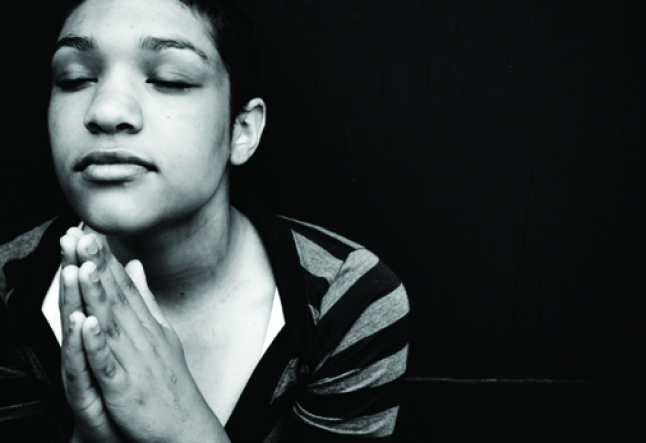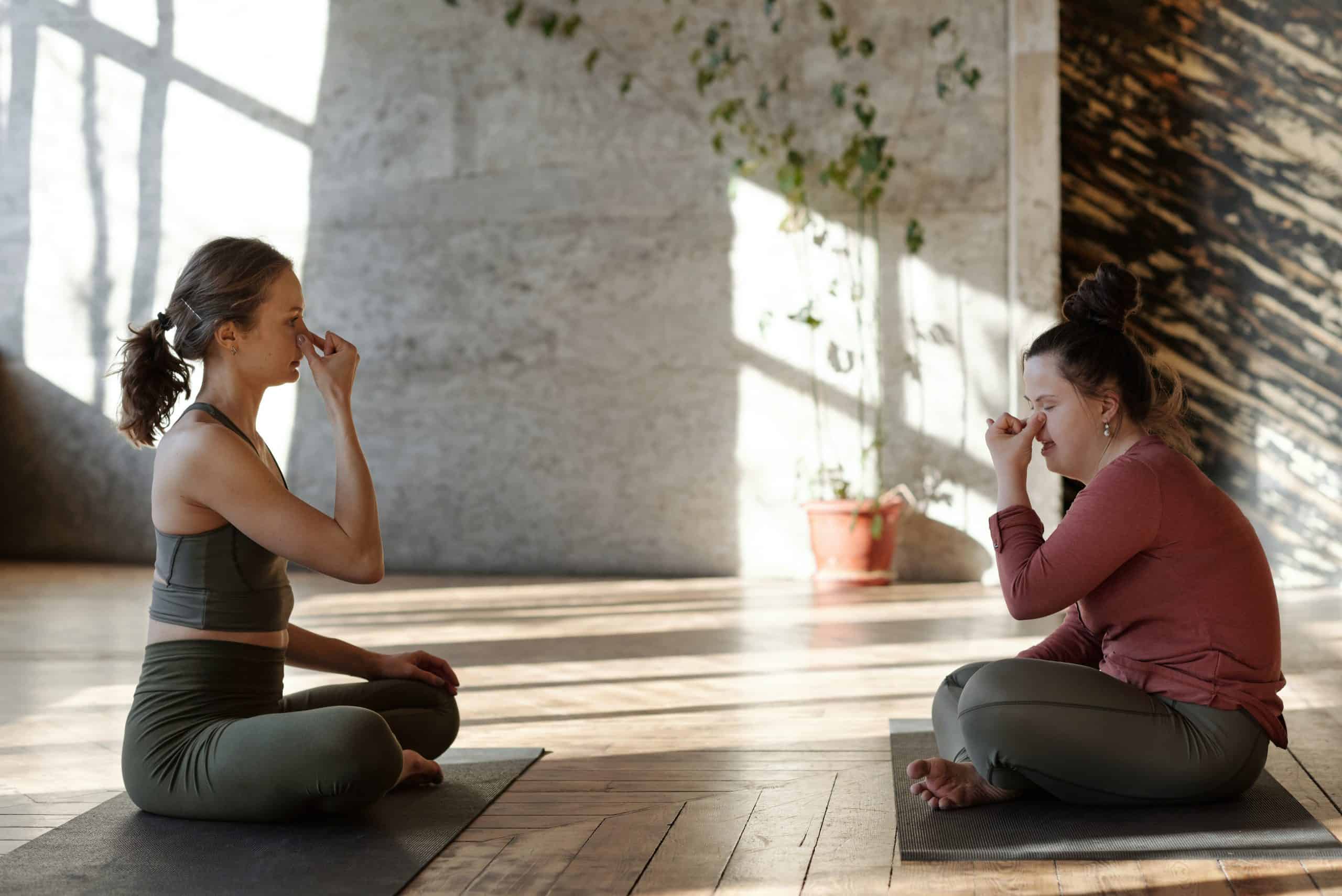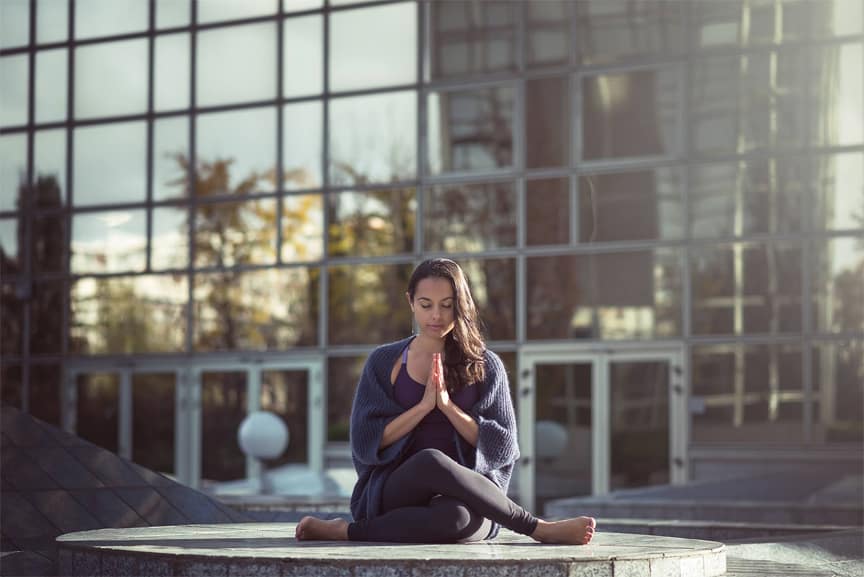the space between breaths: kumbhaka – pranayama

This summer, I took an eight-week course on pranayama, the yogic art of breath control. Halfway through the course, we began to work with kumbhaka , the state of suspended breath. I was a little apprehensive because of my previous experience with breath retention.
Kumbhaka: discovering the value of pausing
Regardless of whether the retention was after an inhale or exhale, I always felt like I was involved in self-strangulation. When I held my breath in during internal retention, my lungs felt like they were going to explode. When it was time for the exhale, I couldn’t get the air out of my lungs fast enough.
External retention wasn’t any better. Within seconds of pausing after exhalation, my body tensed up. My abdominal and throat muscles tightened like nooses. When it was time to exhale, I was sucking down air frantically. Neither experience was pleasant, but I had signed up for the course so that I could work more deeply with my breath. This meant practicing everything in the course regardless of whether I liked it or not.
Related>>> Ziva Meditation
In class when my teacher introduced the concept of kumbhaka I kept my mind open and receptive. After he answered some questions, he asked us to lie down and close our eyes. Then he guided us through a normal exhale and then a slightly deeper inhale. After we finished inhaling he asked us to pause for three seconds.
I was about to count silently to three when something my teacher said caught my attention. “Let this pause be a place of rest,” he advised. So I rested until the natural inclination to exhale arose. I was completely surprised with how easy the kumbhaka was. I had never experienced anything like it and I had no idea how it came about.
Although this new development mystified me, I didn’t try to figure out what happened. Instead, I just enjoyed the time I spent practicing kumbhaka. During my next home practice, I set the intention to practice kumbhaka with ujjayi , a breathing technique that focuses on the gentle lengthening and deepening of inhales and exhales. With just the smallest amount of effort from me, my breath moved from inhale to kumbhaka to exhale to kumbhaka seamlessly.
As the session progressed, I noticed a big difference in my inhales and exhales. In ujjayi, I try to take long, deep breaths but I usually end up inhaling sharply and then stopping abruptly because I’ve run out of room in my lungs. This time it was different. My inhales and exhales were slower and gentler than they have ever been. My ribs, and the muscles around them, felt elastic, as if they could stretch like a balloon. While I sat there quietly breathing, I discovered there was a natural rhythm to my breathing and I liked listening to it.
As I practiced more with kumbhaka it became clear…
that the changes I experienced came from a shift in my thinking. For me breathing consisted of cycles of inhales and exhales. The pause in between was a layover that I was forced to take before I could get back to the business of breathing. Naturally, with this attitude, kumbhaka was a form of torture that I exacted upon myself. Fortunately, my teacher’s words had changed my attitude toward the pause.
Resting in kumbhaka allowed me to see firsthand that the pause was actually a part of breathing. In the quietness of the pause, I experienced the profound sensation of deep relaxation and awareness. Although I liked the feeling of being in kumbhaka, I did not try to resist my inhalation or exhalation when it naturally arose. The inhale, pause and exhale were all essential components of breathing. When I acknowledged and accepted this, the different parts of my breath began to work more harmoniously together.
Related>>> Emily Fletcher Meditation
As my relationship with my breathing practice evolved I could no longer ignore the disjointed manner in which I approached my asana practice. When I was in a pose I paid careful attention to what was happening. In between poses I had very little awareness. My concentration level was full of peaks and valleys.
As an experiment, I decided to pay attention to all my movements and moods whether I was in an asana or not. Not surprisingly, it changed my practice sessions dramatically. They stopped being discrete episodes of concentration separated by periods of mindlessness. Instead, when I got on the mat, I felt like I was practicing yoga for the entire time I was on it.
This type of focus is hard to maintain for long periods when I’m not on the mat. When I’m waiting for the bus or the train, I tend to become impatient for the next thing to happen, or check out and start daydreaming. It’s a lot harder to pause and be there for what seems like a very dull moment.
To Depart
However, don’t I owe it to myself to be present? No matter if it is 10 minutes of waiting in line at the post office or 10 minutes of the best shoulder stand I’ve ever done, it’s still my life. I want to be there for all of it.



